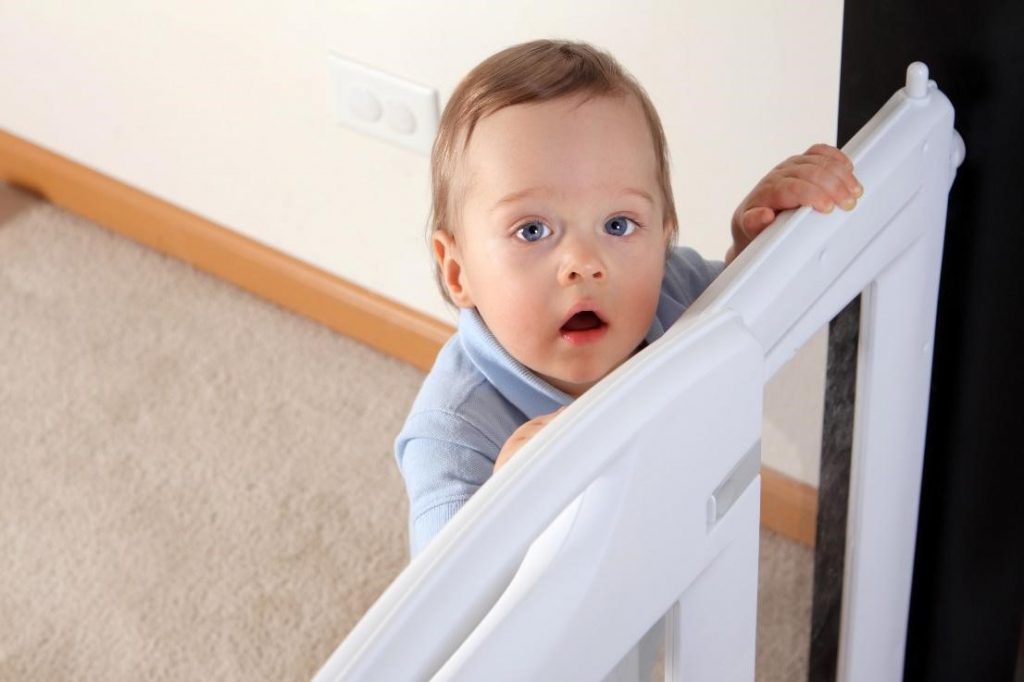Keep your little one safe at home so that they can explore their world with confidence
Babies learn at an incredible rate, mostly through exploration and investigation. Although it’s exciting to witness their various accomplishments, the fast pace of development means they’ll be making discoveries before you can predict and prepare – and with that, comes danger. Take the time to fully baby proof your home well before you think it’s necessary, and enjoy your baby’s adventures with a calmer sense of confidence.
Adult proof, too
So, when does baby proofing need to begin? Believe it or not, before you even bring your baby home. While you don’t need to engage in full-on toddler mode lockdown, evaluate each room for hazards, not only for baby but also for your own potential mishaps.
- Do you have a rug that slips or bunches if you step on it? Time to find a non-slip rug pad or a new flooring solution.
- Is there a wobbly chair you can’t trust? Replace it with a sturdier chair.
- Are your showers steaming hot on the highest setting? Experiment with turning your water heater temperature down to 120 degrees Fahrenheit or lower before you start filling the baby’s bath.
- How organized is your nursery? Set supplies up so that everything you need is in reach and easily accessed with one hand. It seems like common sense that you wouldn’t leave baby unattended to reach for something, but when you’re sleep-deprived and they seem stationary, it can be easy to misjudge the risk.
- Do you have basic safety features like smoke detectors, carbon monoxide detectors, a first-aid kit, and a fire extinguisher at home? Plan for the worst with the hope that you’ll never have to use it, but you’ll enjoy the sense of ease that comes with having these precautions in place.
Busy babies
You’ll have to do more thorough sweeps at various stages – particularly when your baby begins to roll, crawl, stand, and walk. Get down at baby’s level and observe everything with a fresh perspective.
How much trouble can a baby get into?
A bunch.
Don’t underestimate their interest or ability. Start with the following suggestions and keep an eye out for hard-to-guess hazards.
- Cover sharp edges and corners of furniture with bumpers
- Use safety plugs on all available outlets
- Install baby gates at stairs and restricted areas
- Latch cabinet doors and drawers within the baby’s reach
- Remove any blinds with looped cords or replace with safety tassels
- Unplug unused appliances and store them out of sight
- Find an out of reach area where you and your guests can keep purses and bags
- Place a thick rug or carpet in front of the changing table
- Make sure the crib isn’t near windows, lamps, cords, or anything within grabbing range
- Keep blankets, pillows, and bumpers out of the baby’s crib
- Secure small choking hazards such as coins, paperclips, etc. in the car and house
- Get safety latches for oven knobs, refrigerator, and toilet seat
- Keep medicine, cleaning supplies, paint, and hazardous materials up high and in a locked area
- Attach heavy furniture and televisions to the wall to prevent these items from tipping over
Babies are clever, fast, determined, and likely to surprise you. It can feel scary to give them the freedom and space that they need to learn and grow, but you can feel less anxious by being prepared, assessing the risks, and mitigating the potential for danger. Put in the work before it needs to be done, and sit back and relax in your role as baby’s adventure guide in life.
The Virginia Infant & Toddler Specialist Network helps improve the quality of care for infants and toddlers through extensive resources, services, and education for caregivers. Learn more about how we can help you improve the standard of care.




